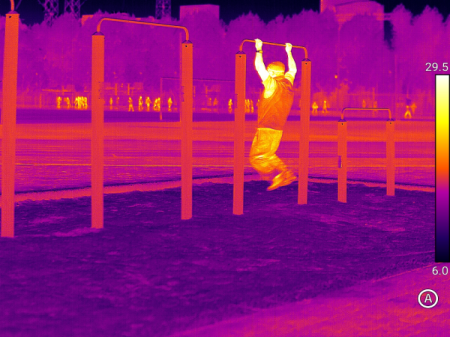Thermal imaging has emerged as a valuable tool for homeowners, enabling quick and accurate diagnostics for home maintenance and energy efficiency. Once exclusive to industries and professionals, thermal imaging technology is now more accessible, with many affordable and user-friendly devices on the market. Using infrared technology, these devices can reveal temperature variations in different areas of a home, allowing owners to spot issues that would otherwise remain hidden. Here are the top five applications of thermal imaging that can help homeowners save money, improve comfort, and enhance safety.

1. Insulation Checks
Proper insulation is crucial for maintaining indoor temperatures, enhancing comfort, and reducing energy bills. Poor insulation allows heat to escape in the winter and infiltrate in the summer, forcing HVAC systems to work harder and increasing energy costs.
How Thermal Imaging Helps:
Thermal cameras can reveal areas of heat loss by displaying color variations across walls, ceilings, and floors. Poorly insulated spots often appear as cool (blue) areas in winter and warm (red/yellow) areas in summer. By identifying these areas, homeowners can add or repair insulation to improve energy efficiency. This is especially useful for older homes where insulation may have degraded over time.
Tip: Check insulation in the attic, walls, and around windows and doors, as these are common areas for heat leakage.
2. Moisture and Leak Detection
Moisture issues in a home can lead to mold growth, structural damage, and unhealthy indoor air. Leaks may be caused by damaged plumbing, poor drainage, or faulty roofing. However, these problems are often hidden within walls, floors, or ceilings, making them hard to locate before significant damage occurs.
How Thermal Imaging Helps:
Thermal imaging cameras detect temperature variations caused by moisture. Wet areas tend to cool faster than dry ones, creating visible "cool spots" on thermal images. By scanning around windows, roofs, basements, and bathrooms, homeowners can identify areas where moisture may be accumulating and fix leaks before they cause serious damage.
Tip: Perform regular checks after heavy rainfall or extreme weather, as these events often reveal hidden leaks.
3. Electrical System Inspections
Electrical faults are a common cause of household fires, especially when wiring or circuit connections become loose or overloaded. Electrical systems that are overheating often emit more heat than usual, a warning sign that a component may be malfunctioning.
How Thermal Imaging Helps:
Thermal cameras can spot overheating electrical components, including outlets, circuit breakers, and wiring. During an inspection, "hot spots" appear as warmer areas on the screen, allowing homeowners to address electrical issues before they escalate into dangerous problems.
Tip: For best results, check electrical panels and outlets during peak usage times when appliances are actively drawing power. Consult a professional electrician for repairs if hot spots are detected.
4. HVAC System Efficiency
The heating, ventilation, and air conditioning (HVAC) system is a major contributor to home energy consumption. Inefficiencies in this system—like clogged ducts, leaking vents, or poor airflow—can make it difficult to maintain comfortable indoor temperatures, leading to higher energy costs.
How Thermal Imaging Helps:
Thermal imaging can help homeowners spot problems in the HVAC system. For example, ductwork leaks show up as cooler areas where conditioned air is escaping. Blockages or clogs, which cause heat to build up in certain areas, also become visible. Detecting these issues allows homeowners to fix or clean ducts, improving overall system efficiency and reducing energy consumption.
Tip: Inspect ductwork and vents at least once a year to ensure air is flowing freely and to catch leaks or clogs early on.
5. Identifying Pest Infestations
Pests like rodents, termites, and bees can wreak havoc on a home's structure. Since many pests seek warmth, they often hide within walls or attics where they're difficult to detect visually. Left unchecked, pest infestations can cause structural damage, electrical issues, and health hazards.
How Thermal Imaging Helps:
Thermal imaging cameras can detect temperature anomalies associated with pest activity. Nesting areas may appear as warm spots due to the heat emitted by the pests themselves or their nests. Homeowners can scan areas like attics, basements, and wall cavities to locate infestations before they cause significant damage.
Tip: Conduct thermal scans periodically, particularly in areas where you suspect pest activity or have had issues in the past. If an infestation is detected, call a pest control professional to address the problem.
Thermal imaging is a versatile tool that can help homeowners identify hidden issues, improve home efficiency, and maintain a safe living environment. From insulation checks to pest detection, these applications highlight how thermal imaging empowers homeowners to make informed decisions, ultimately saving money and preventing costly repairs. As thermal imaging devices become more affordable and user-friendly, they’re becoming a smart investment for proactive home maintenance.
With the ability to "see" beyond what's visible, thermal imaging is truly transforming the way homeowners care for their properties.












